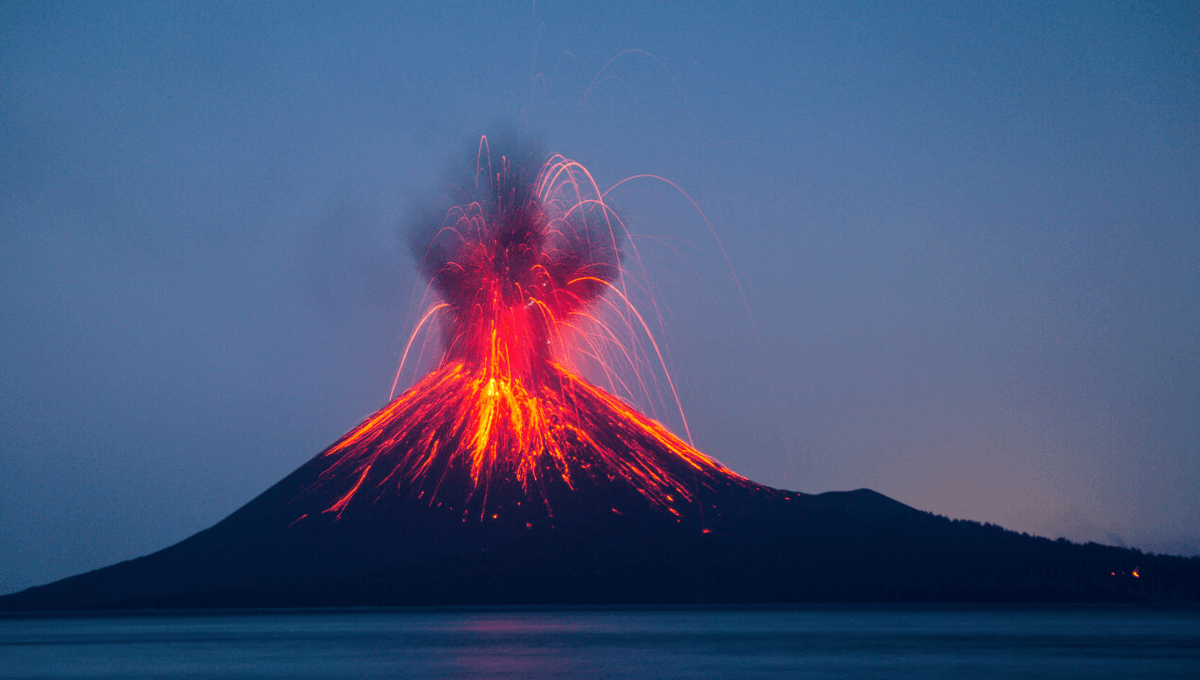
Hundreds upon hundreds of active volcanoes are scattered across planet Earth, but only a small number are currently in the grips of a violent eruptive episode. While it’s difficult to predict when a volcano might blow, geologists are constantly keeping tabs on those that are already neck-deep in an eruption.
There are approximately 1,350 potentially active volcanoes worldwide, of which around 170 are found in the US or its territories, according to the US Geological Survey (USGS). An abundance of these are located along the “Ring of Fire” around the Pacific Rim, where the clash of tectonic plates makes for some intense seismic activity.
The overwhelming majority of these active volcanoes are not currently erupting. However, the angry few that are erupting will be detailed in the Weekly Volcanic Activity Report, a cooperative project between the Smithsonian’s Global Volcanism Program and the USGS’s Volcano Hazards Program.
The latest report, published on November 14, 2023, indicates that 19 volcanoes are in an active, near-daily state of eruption. Below is a list of those volcanoes with the most recently started eruption at the top.
- Reykjanes in Reykjanes Peninsula, Iceland.
- Aira in Kyushu, Japan.
- Dukono in Halmahera, Indonesia.
- Ebeko in Paramushir Island, Russia.
- Etna in Sicily.
- Fuego in Guatemala.
- Great Sitkin in the Andreanof Islands, USA.
- Lewotolok in Indonesia’s Lembata Island.
- Mayon in Luzon, Philippines.
- Merapi in Central Java.
- Popocatepetl in Mexico.
- Rincón de la Vieja in Costa Rica.
- Santa María in Southwestern Guatemala.
- Semeru in Eastern Java.
- Sheveluch in Central Kamchatka, Russia.
- Shishaldin in the Fox Islands, USA.
- Suwanosejima in the Ryukyu Islands, Japan.
- Taal in Luzon, Philippines.
- Villarrica in Central Chile.
This is just a small snippet of the volcanic eruptions around the world. Overall, 46 volcanoes are considered to be in a “continuing eruption status,” defined as experiencing eruptive events at least every three months without a break. These include:
- Ulawun, Papua New Guinea.
- Shishaldin, USA.
- Ubinas, Peru.
- Klyuchevskoy, Russia.
- Mayon, Philippines.
- Kikai, Japan.
- Etna, Italy.
- Nishinoshima, Japan.
- Ebeko, Russia.
- Kavachi, Solomon Islands.
- Rincón de la Vieja, Costa Rica.
- Krakatau, Indonesia.
- Great Sitkin, USA.
- Merapi, Indonesia.
- Lewotolok, Indonesia.
- Sangay, Ecuador.
- Tinakula, Solomon Islands.
- Karangetang, Indonesia.
- Nyamulagira, DR Congo.
- Semeru, Indonesia.
- Ol Doinyo Lengai, Tanzania.
- Aira, Japan.
- Bezymianny, Russia.
- Sabancaya, Peru.
- Langila, Papua New Guinea.
- Masaya, Nicaragua.
- Tofua, Tonga.
- Villarrica, Chile.
- Nevado del Ruiz, Colombia.
- Saunders, South Sandwich Islands (technically the UK).
- Manam, Papua New Guinea.
- Heard, Australia.
- Reventador, Ecuador.
- Ibu, Indonesia.
- Popocatepetl, Mexico.
- Suwanosejima, Japan.
- Nyiragongo, DR Congo.
- Fuego, Guatemala.
- Bagana, Papua New Guinea.
- Sheveluch, Russia.
- Erebus, Antarctica.
- Erta Ale, Ethiopia.
- Stromboli, Italy.
- Dukono, Indonesia.
- Santa María, Guatemala.
- Yasur, Vanuatu.
Some of these have been in a continuing eruption status for decades or even centuries. For instance, Stromboli in Italy has been officially erupting since February 1934, although it has been in an almost continuous eruption for the past 2,000 years. Likewise, Mount Yasur in Vanuatu has been in a state of eruption since the 13th century CE.
The big concern at the moment focuses on Iceland’s Reykjanes Peninsula, which is currently entering a new era of volcanic eruptions that will last for up to 500 years. On November 12, there were 1,000 quakes in Reykjanes Peninsula and many suspect that a massive volcanic eruption of Fagradalsfjall is imminent. The risk is so high that Icelandic authorities evacuated the fishing town of Grindavík after giant cracks formed along its roads.
Source Link: How Many Volcanoes Are Actively Erupting Today? More Than You May Think